IB Visual Arts
Rubaba Khandaker
You walk up to this exhibition, inching your face a little too close to the artworks for comfort as your eyes level with someone else’s. Instantly, you notice her audacity to exist. To stare back at you, as you stare at her. This woman holds an apple, and it scares you. But what makes you more scared, the apple? Or what might happen if she bites it? “What kind of horrors will be revealed once she bites?” You’d ask yourself, suddenly noticing the wetness of her eyes, and a silvery band wrapping around her head. Your gaze is uninterested as it soaks up the glossiness of her lips. You move on.
Your eyes go in shock as they are suddenly blasted with bright bursts of pink, and pink, and more pink! It feels so sticky, so sickly sweet and nauseating – and it disgusts you seeing so many girls licking up that sugar with their freakish tongues. Their naked bodies seem to be deriving pleasure from the sweetness, and you can’t look away from their grotesque femininity. Their Vile, Grotesque, Femininity.
“Vile, Grotesque, Femininity.” This is the name I have given to my overall curated exhibition of the artworks I have created over the final year of my IBDP. This exhibition explores some of the different aspects of the crude and subtle ways a person can villainise someone based almost only on the fact of them presenting feminine. All of the artworks are named with reference to biblical events and knowledge, as one of the prevailing reasons for the objectification and fetishisation of femininity in our 21st Century, and years past, has been religion. Artworks such as, Wrath., Gluttony., Lust., and Pride., are named after 4 of the 7 deadly sins. Meanwhile, Vanity. and Humility. directly contrast each other in name, nature, and composition placement. And in the centre of it all, sits Eve. She has been specifically placed in the centre of the composition because the biblical Eve is coincidentally the first human woman, as well as the cataclysm of the original sin and the fall of man. This, of course, is how many religious individuals that follow the bible justify their (often-violent) misogyny. So, she is physically and symbolically in the centre of this problem – that, and it is aesthetically pleasing to have the biggest artwork lay in the centre.
Both photographic and acrylic-on-canvas mediums were used to display these concepts. However different these mediums may be, their cohesion lays in the messages they represent and their relationship to one-another. The cartoonish, caricature figures of the acrylic paintings are meant to personify my personal abstract understandings of misogyny and the fetishisation of femininity. Albeit, maybe a little hyperbolised for a dramatic flair. But from these painted hyperboles, are derived the photographic components of the composition. The photographs provide a more relatable perspective into these issues, since they all show how the events of the paintings may play out in the real world. The derivative nature of these photographs are also the reason why they all sit on the outer edges of the composition.
This entire exhibition stems from my own internal prejudice against the femininity that I have only recently began to fully embrace – as seen in the hyper-feminine aesthetics of most of the composition. Pink, to me, was evil. It was fake, manipulative, and “much too girly.” Skin, and the feminine body, was sinful. To exist as a woman was a crime deserving of all the punishment that came with it. The hate, the assault, and the male gaze (which focuses on separating a woman from her body). This gaze, of course, is also present throughout all of the artworks in the composition, as seen in the way every woman in the exhibition is missing at least their eyes, or their mouths, or even their entire face. Except for once – in the 2nd series of Humility. But this is only so, because that image comes directly from the eyes of the subject herself.
Then, you finally take a few steps back from the exhibition. You see it at last. The over-arching beast with its watchful eyes. Preying. Slowly, you realise that the silvery band was you.
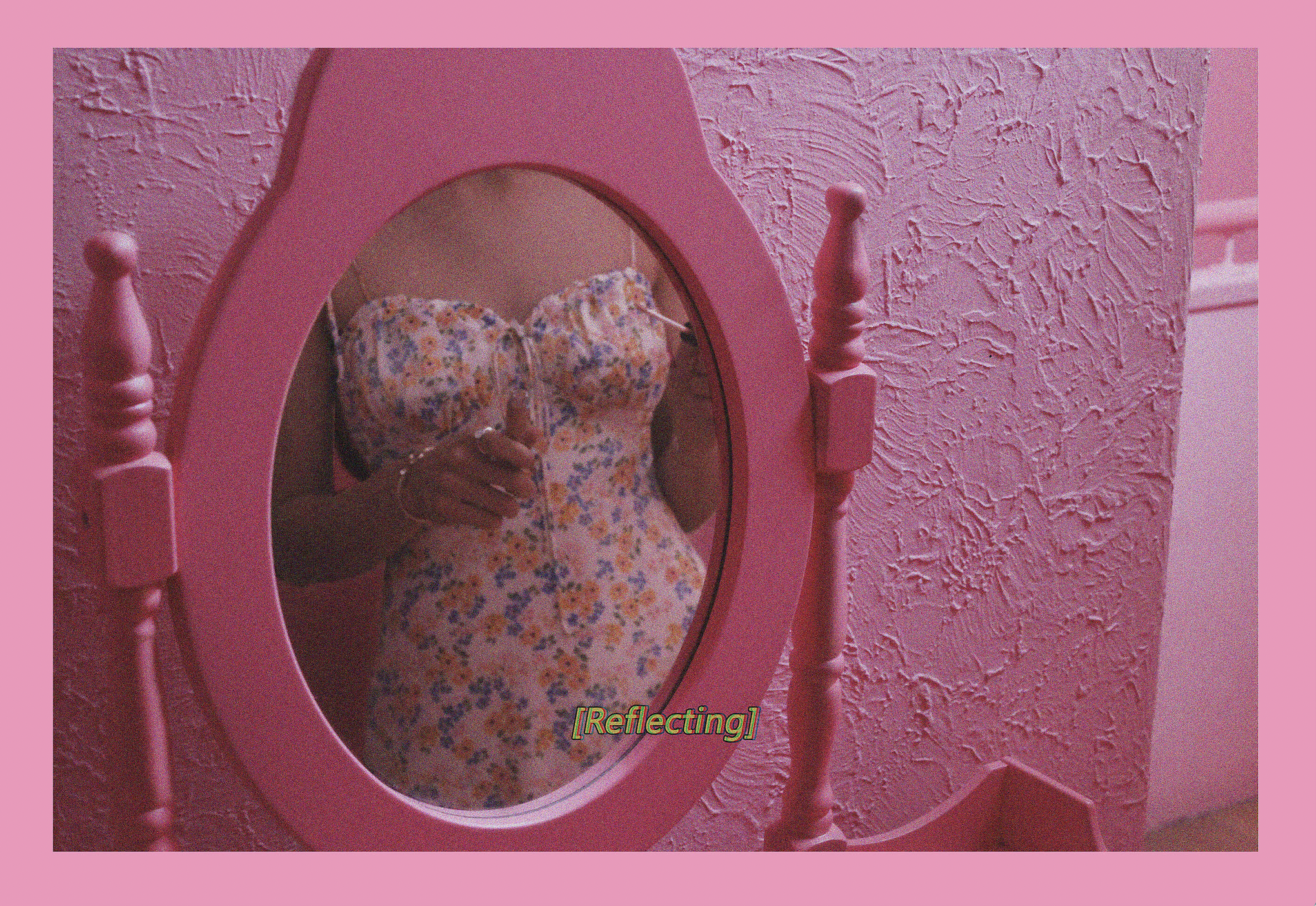

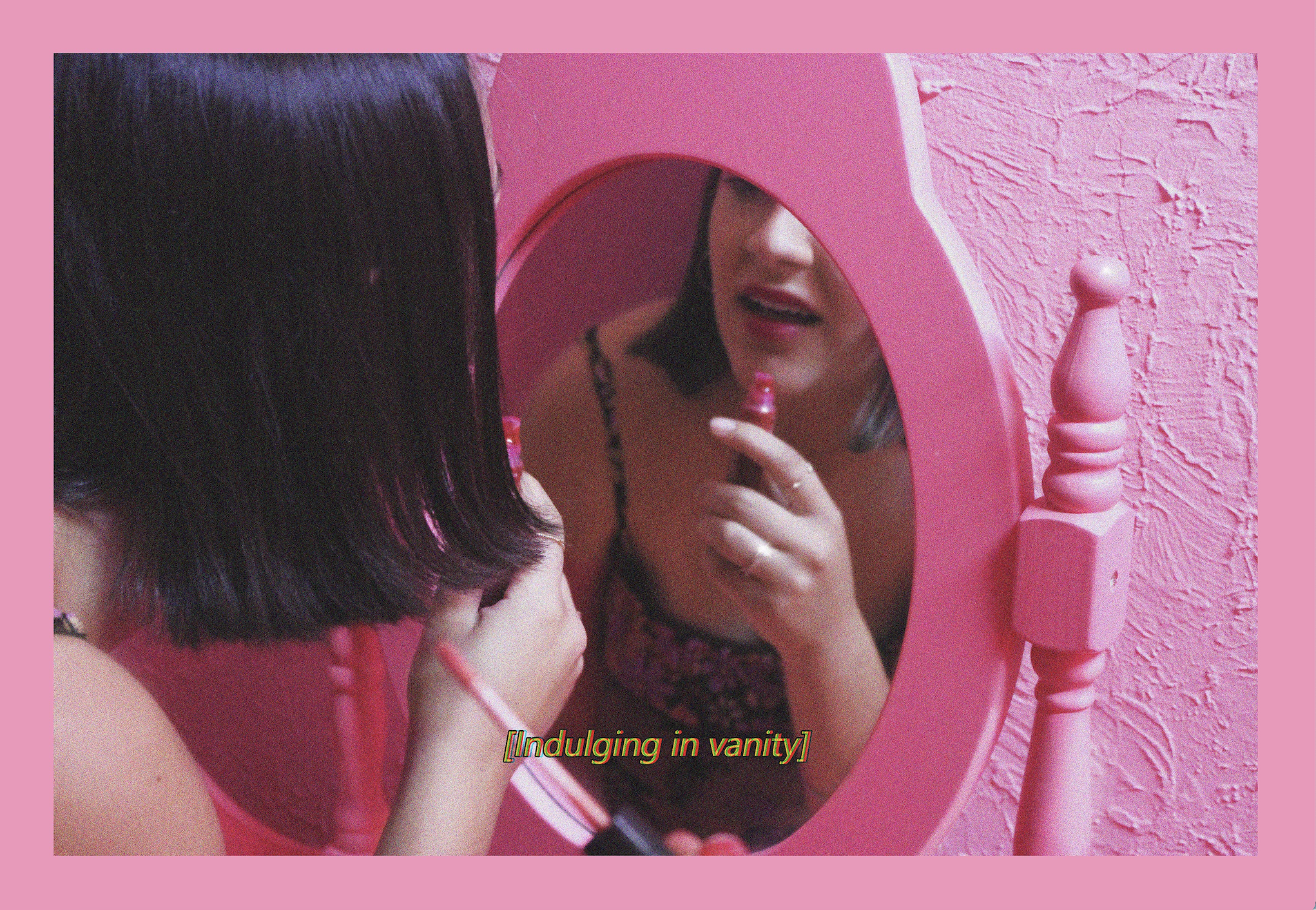

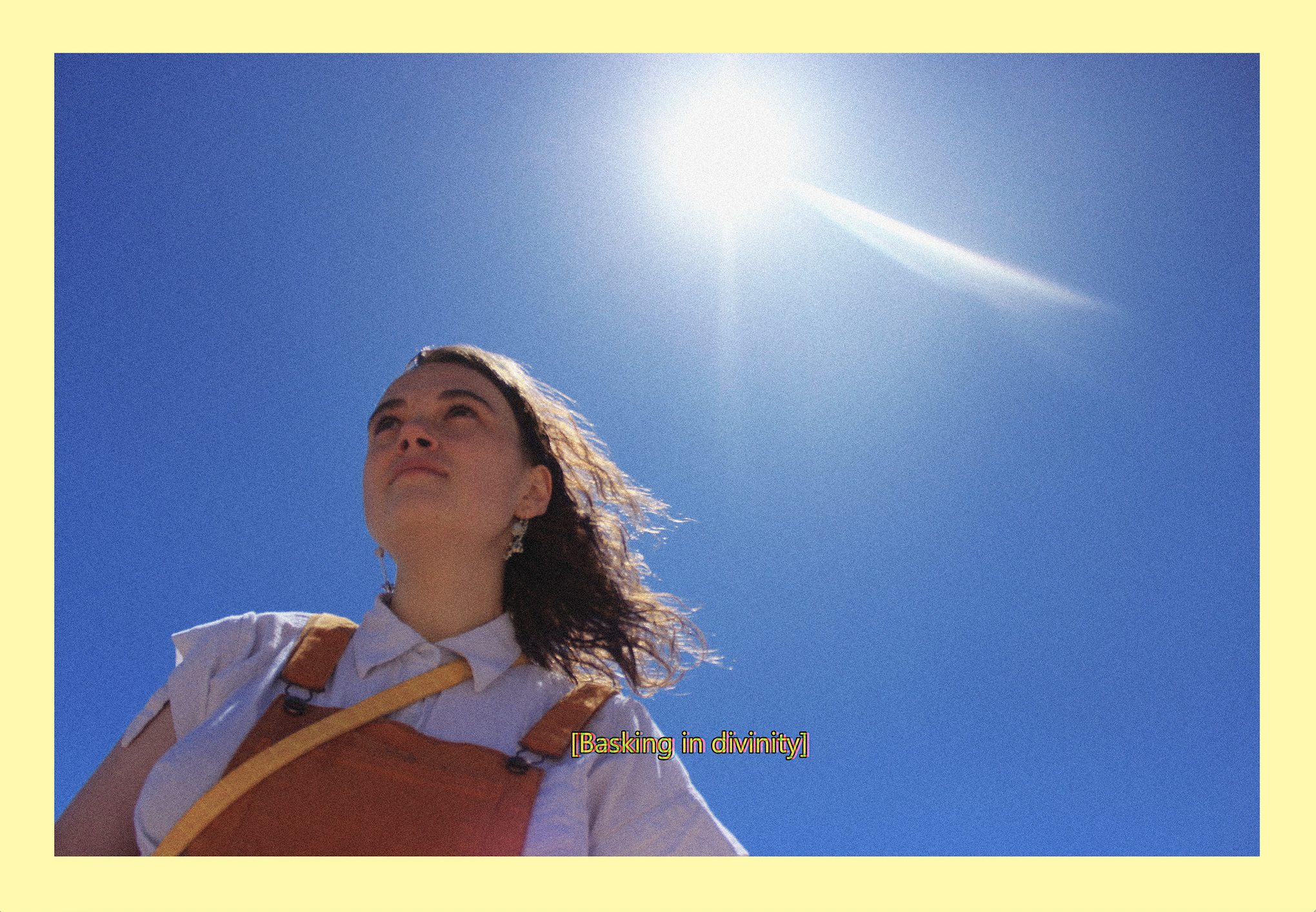
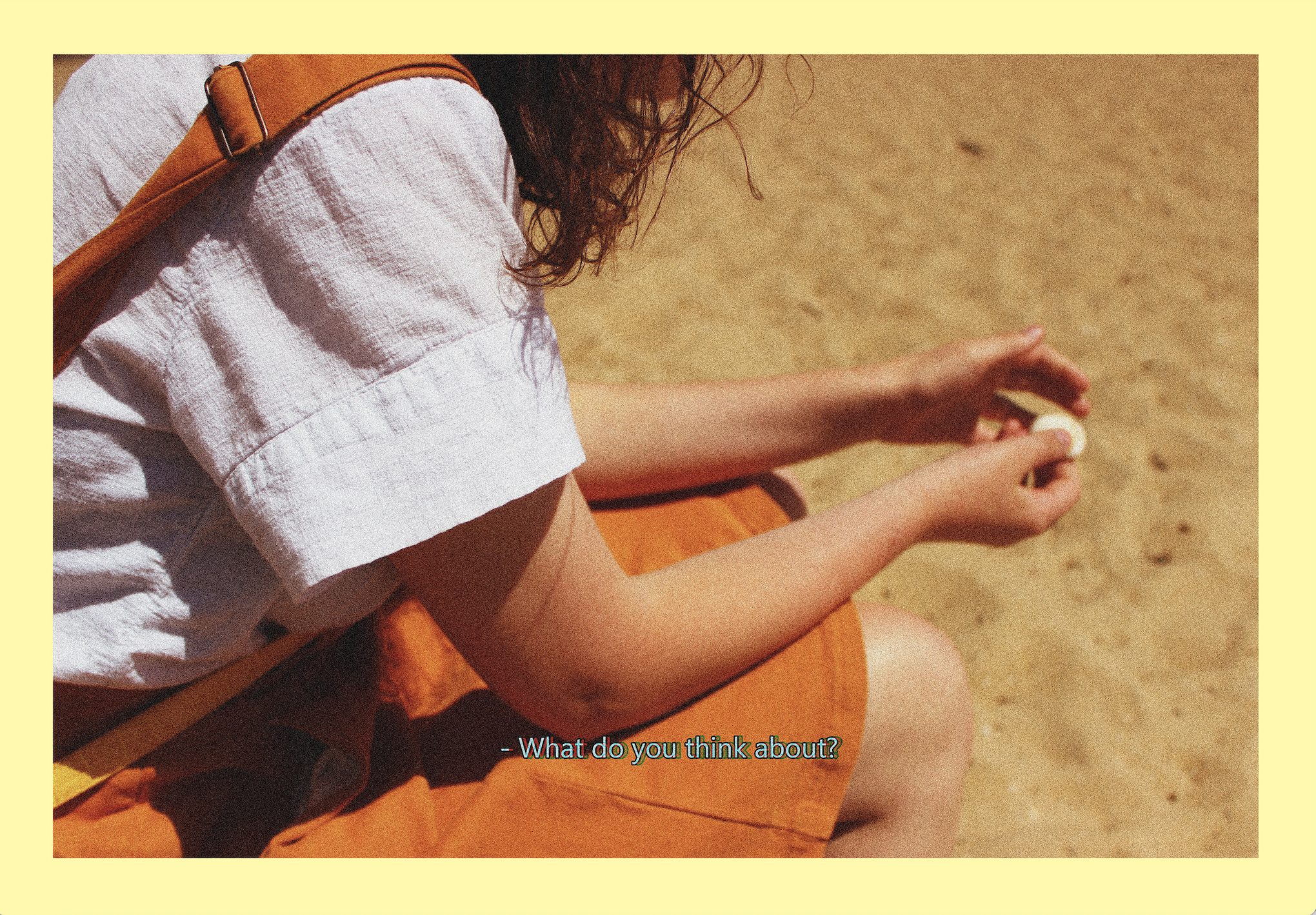

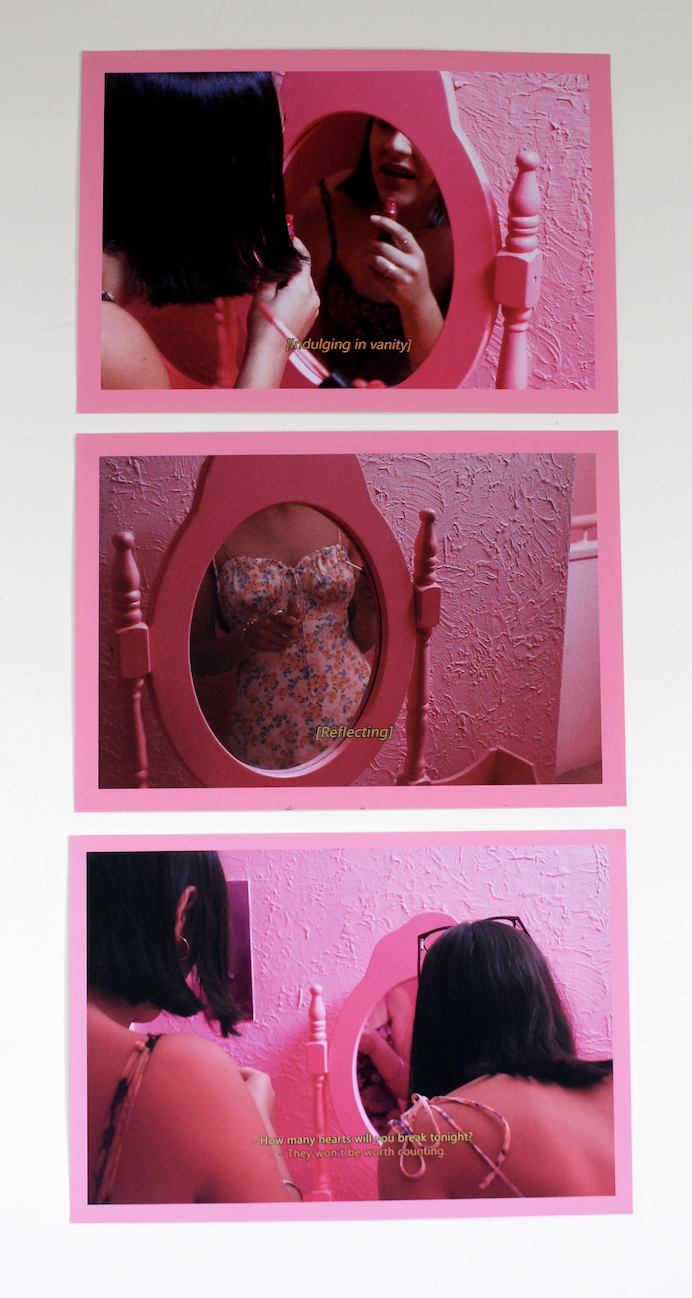


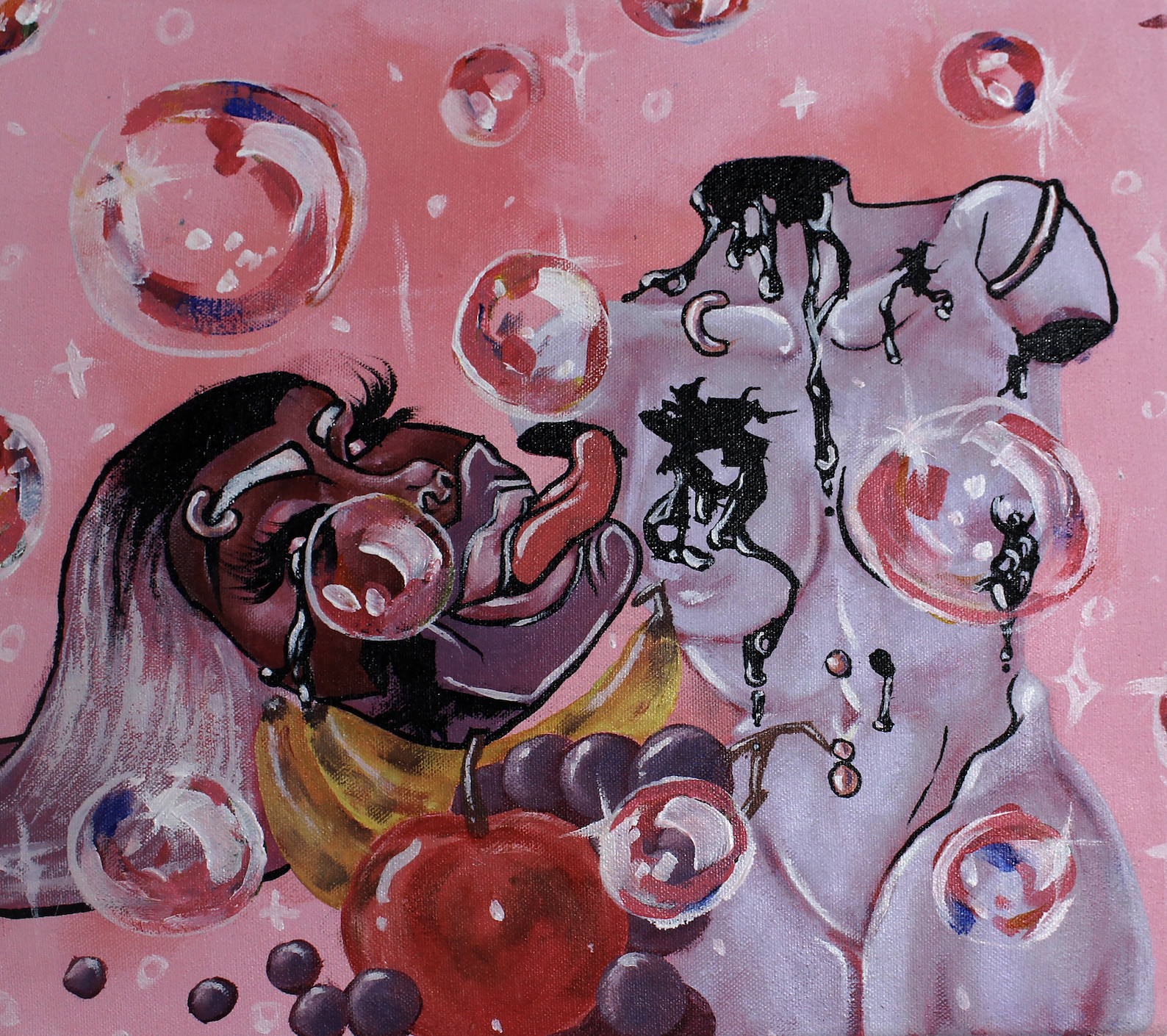

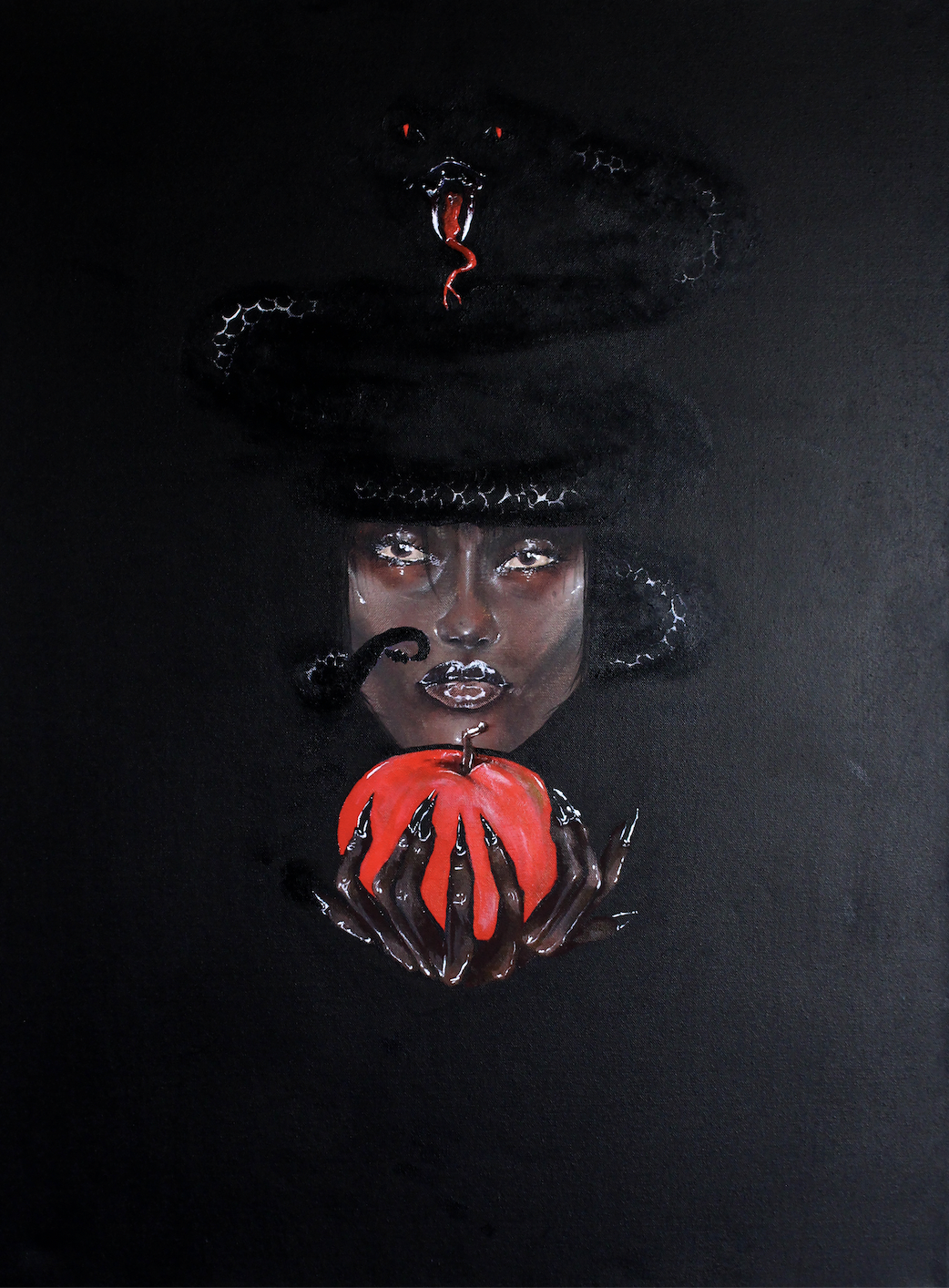
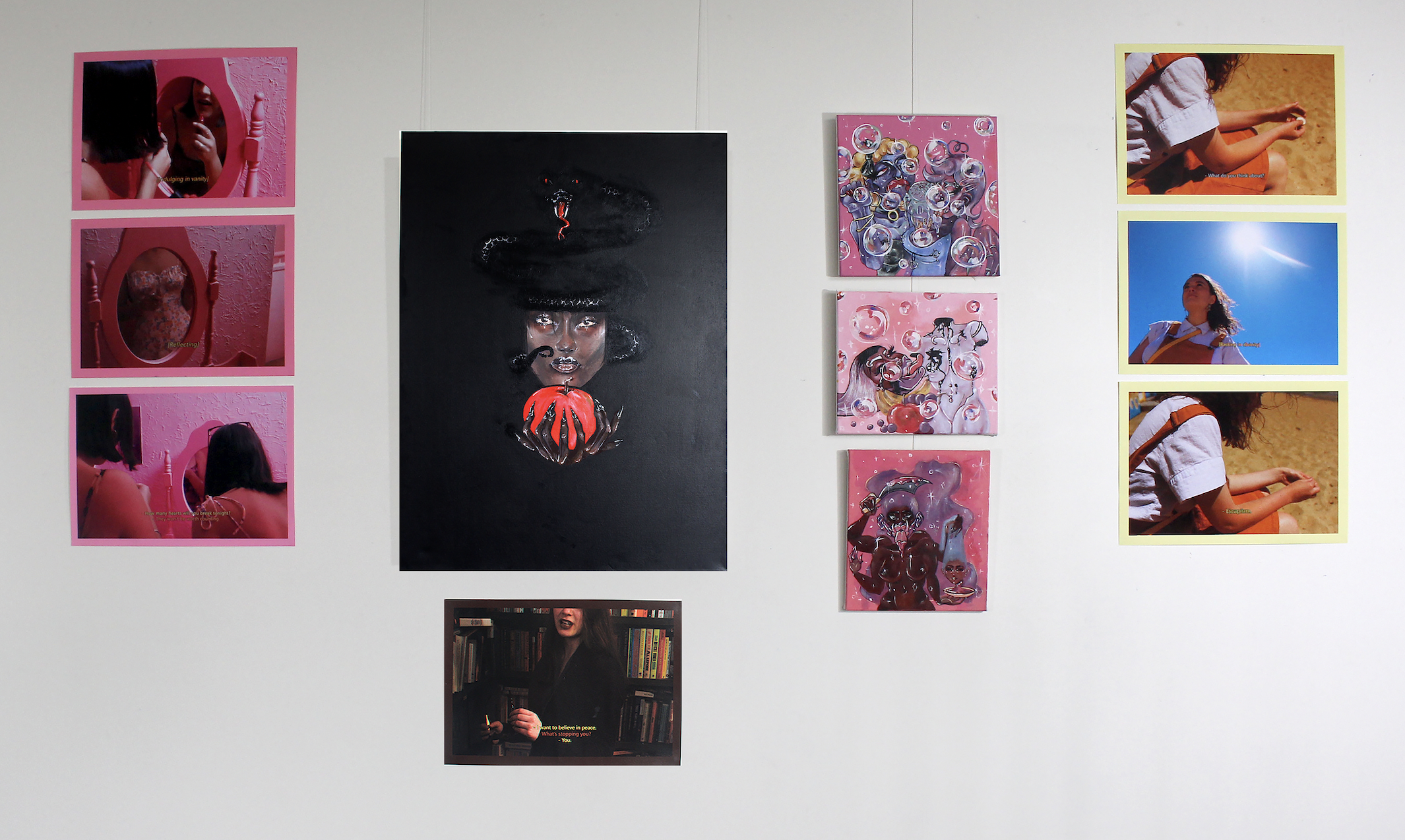
Rubaba Khandaker
Vanity.
Series of three, digitally edited Photograph on paper
41x60cm each
Pride. explores the concept of perceived villainy in self-confidence and self-love. Particularly the self-love of women. The artwork conveys a story of two women indulging in themselves for a night, focusing on nothing else but themselves. Inspired by the hazy pink aesthetic of the early 2000s, this series takes the viewer to an uncomfortable place, in which they should feel that they are intruding – as if they are stopping these women from loving themselves.
Eve.
Acrylic on Canvas
101x76cm
Eve. explores the concept of the overall perceived villainy inherently present in women. Particularly, victims who are villainised on the count of being women. The artwork portrays the biblical story of Eve, the first woman, who was also the cataclysm of “original sin” (the inherent evil nature of man). But look deeper into her eyes, and you’ll ask yourself who controls the narrative you have made for her. Is it her face? Or the omnipresent figure around her?
Wrath.
Digitally edited photograph on paper
41x60cm
Wrath. explores the concept of perceived villainy in self-care. Particularly the self-care practised by women. The artwork conveys a story of a woman seeking comfort in intellect and academia, yet interrupted in her search – much to her annoyance. This, along with the dark academia-inspired aesthetic, should explicitly depict the woman as a villain, but the viewer should question their role in the perceived villainy of her.
Gluttony.
Acrylic on Canvas
40.5x40.5cm
Gluttony. explores the concept of perceived villainy in enjoyment. Particularly, enjoyment that is experienced by women. This artwork conveys the story of two women enjoying a cone of ice-cream together. And they are made to exist in their most vile, most grotesque form – on purpose. The viewer here, is encouraged to question what aspects of the painting make these women out to be so repulsive. Is it the way they dress? The way they stand? The hyper-femininity of the artwork? Or perhaps it is the pleasure they are experiencing? In which case, why is the pleasure of these women villainised?
Lust.
Acrylic on Canvas
35x40.5cm
Lust. explores the concept of perceived villainy in victims. Particularly when these victims are women experiencing crimes against their own bodies. This artwork depicts the story of a woman who has been completely detached from her own body due to whatever forces that may have decapitated her. Inspired by the #MeToo movement, the painting conveys the pain felt by women who have had their existence stripped away from themselves and objectified. She cries in silence, her mask only giving way for her tongue to reach up and drink her lifeblood in an attempt to reclaim the body. And yet this is the act that makes her repulsive.
Pride.
Acrylic on Canvas
40x35.5cm
Pride. explores the concept of perceived villainy in strength and power. Particularly, the strength and power present in women. The artwork is a reference to the Hindu goddess Ma Kali, or “Mother Kali,” The Nurturer and Devourer. This woman stands in her beautiful, yet grotesque nakedness, holding a severed head and draining it from its blood, blood which then stains her tongue. And she stares at you, unspoken as a mask covers her mouth. But in that silence, she reclaims her strength. Yet, this power terrifies you. Why?
Humility.
Series of three, digitally edited photograph on paper
41x60cm each
Humility. explores the concept of the perceived goodness in self-hatred. Particularly the self-hatred of women. The artwork conveys a story of a woman who hides herself and her desires away in fear of being seen as the villain. Inspired by the hazy imagery of dreams, this beach-set series represents the soft tenderness, warm intimacy, and gaping hollowness of fleeting ambition. The viewer should feel comforted by these images, but question their role in the emptiness presented in these photographs.
